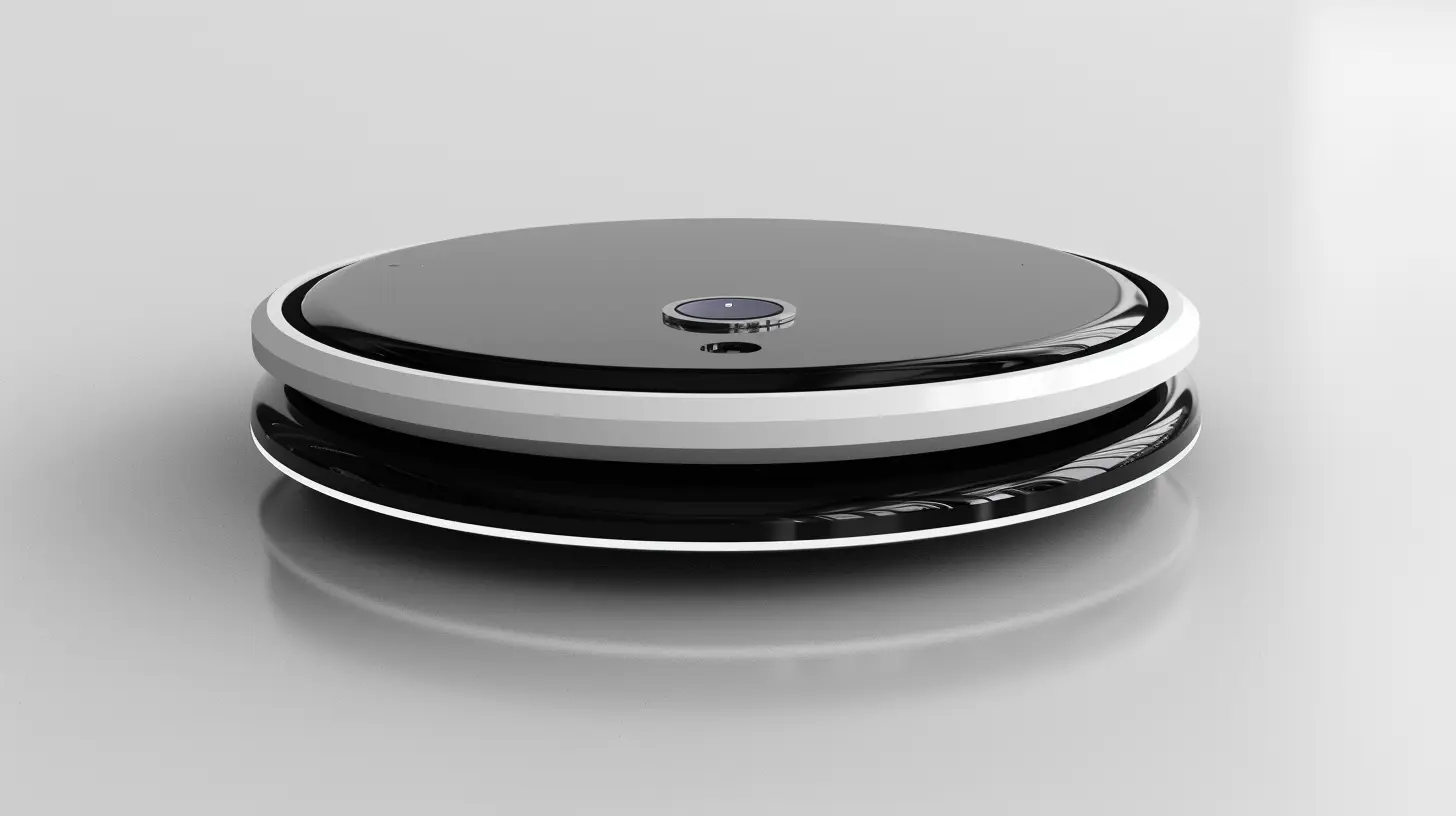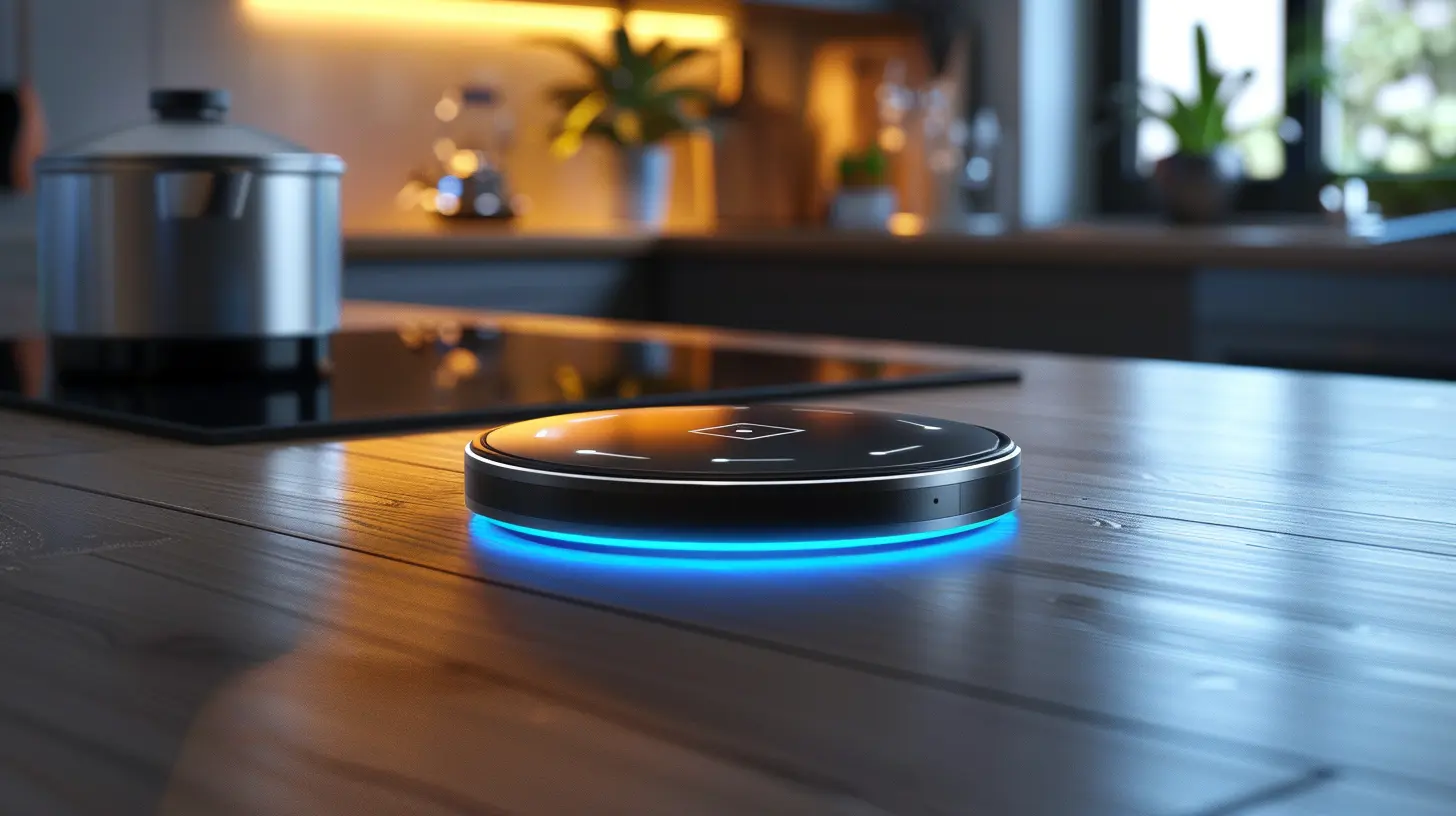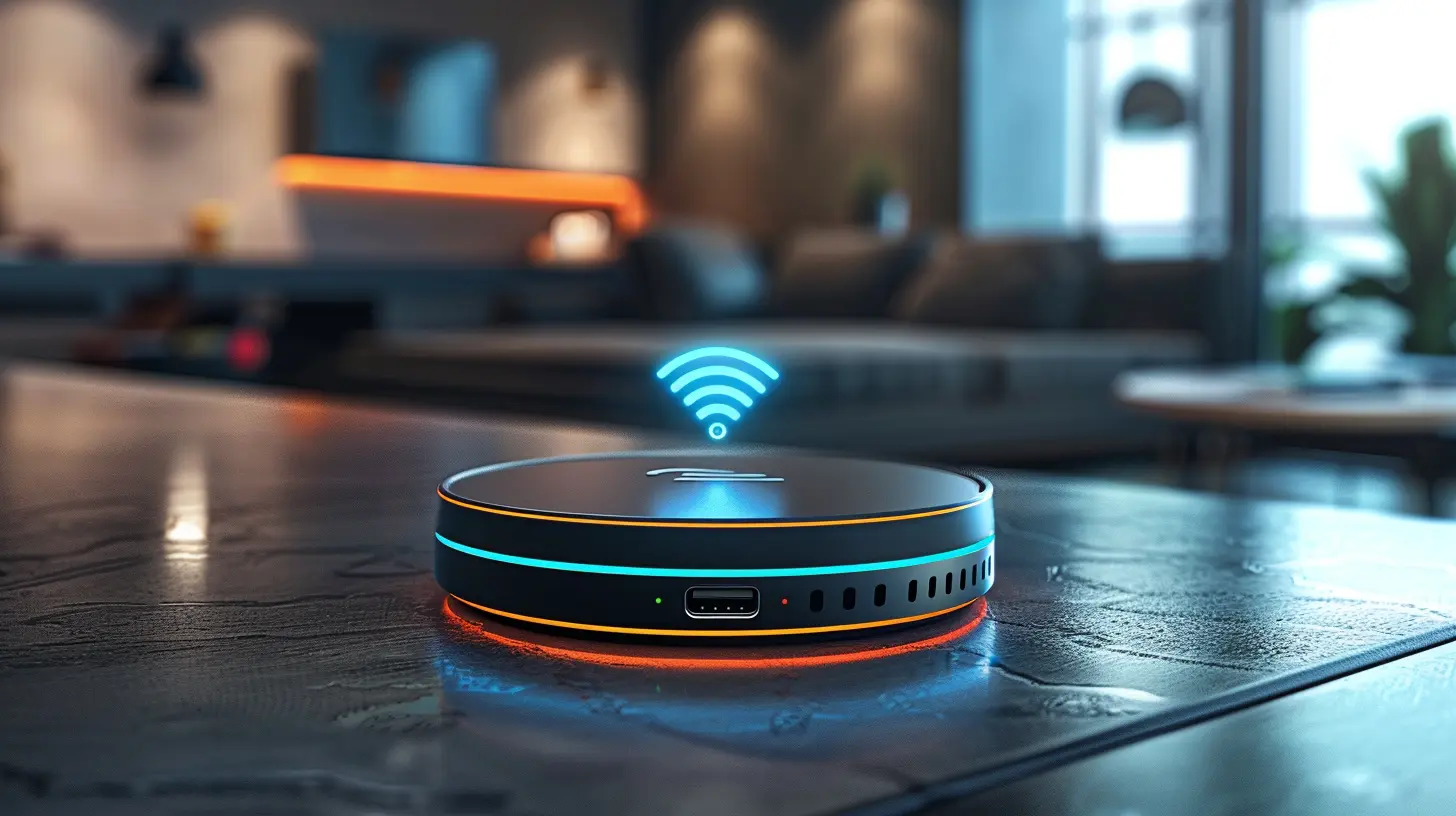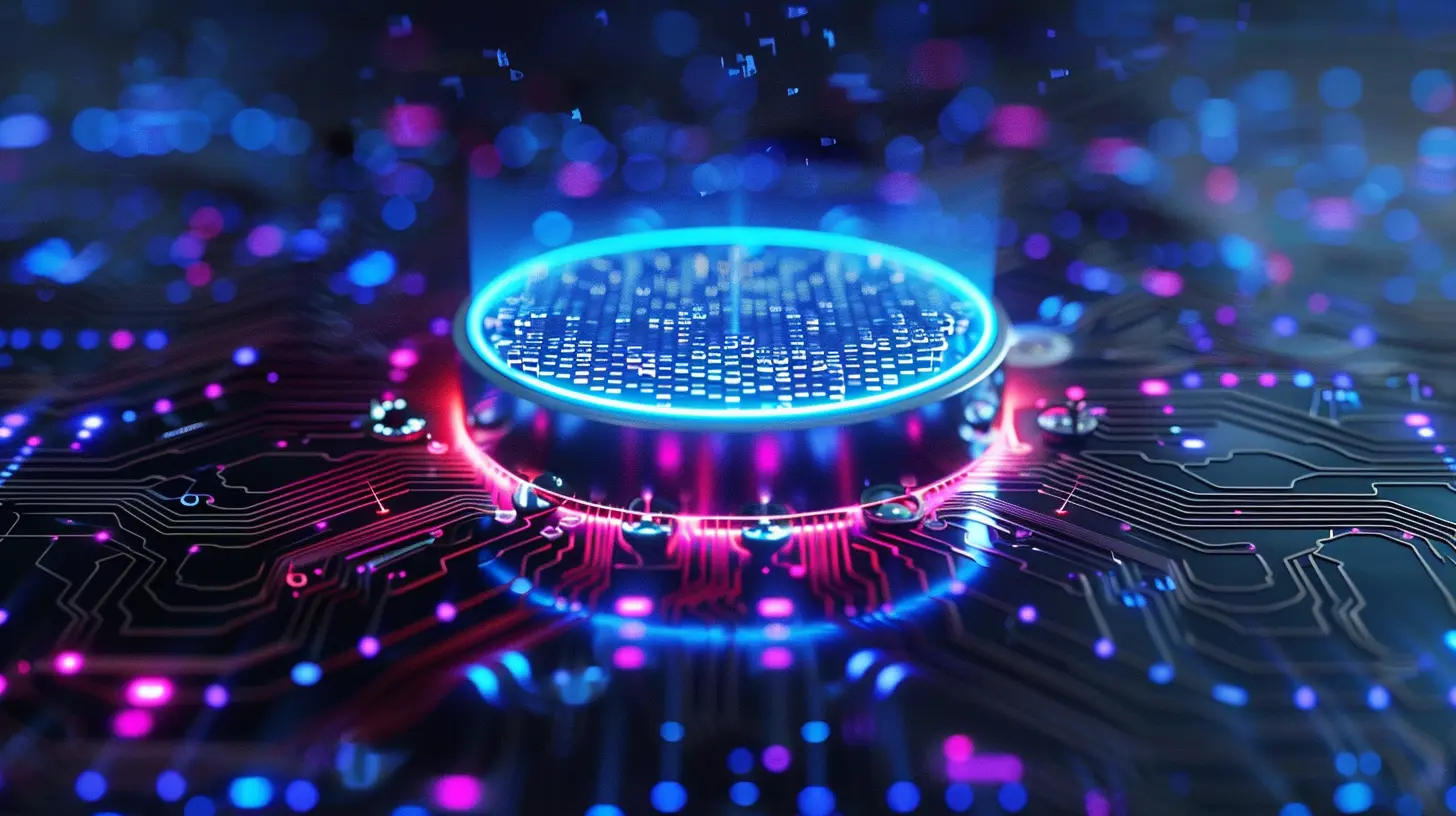Wireless Charging and the Internet of Things: A Perfect Match
17 October 2025
In today's fast-paced, tech-driven world, two groundbreaking innovations have taken center stage — wireless charging and the Internet of Things (IoT). The convergence of these two technologies not only feels inevitable but also like a match made in heaven. After all, IoT devices thrive on seamless connectivity, and wireless charging promises a future where cables are a thing of the past. So, what happens when you combine the two? Spoiler alert: Magic!
In this article, we'll dive into how wireless charging and IoT complement each other, explore their potential, and discuss the role they might play in shaping the future.

What is Wireless Charging?
Let's start with the basics. Wireless charging, also known as inductive charging, allows devices to charge without a physical connection to a power source. Instead of plugging in, you simply place your device on a charging pad, and voilà, the battery starts juicing up through electromagnetic fields. Sounds like something out of a sci-fi movie, right? But wireless charging is very much a reality today, and it's been here for a while. From smartphones to electric toothbrushes, we're already seeing the convenience it brings to our everyday lives.How Does Wireless Charging Work?
Wireless charging relies on electromagnetic induction. In simple terms, it uses coils inside the charging pad and the device. When you place your device on the pad, electricity flows through the coils in the pad, creating a magnetic field. This field generates a current in the coil within your device, charging the battery wirelessly.There are different types of wireless charging, with Qi (pronounced "chee") being the most common standard. It's widely adopted across many industries, especially for smartphones, wearables, and even some laptops.

What is the Internet of Things (IoT)?
The Internet of Things (IoT) refers to the network of physical objects or "things" embedded with sensors, software, and other technologies to connect and exchange data with other devices and systems over the internet. Think of it as the ultimate digital network for "smart" devices. Anything from your smartwatch to your fridge can be part of the IoT ecosystem, enabling them to communicate, gather data, and even make decisions autonomously!How Does IoT Work?
At its core, IoT operates on a simple principle: connectivity and data exchange. Devices are connected to the internet and to one another, continuously collecting data through sensors. That data is then processed and analyzed, allowing devices to perform tasks or make recommendations based on the information they gather. This means your smart thermostat can adjust the temperature based on your habits, or your refrigerator can alert you when you're low on milk.
Why Wireless Charging and IoT are a Perfect Match
Now that we're clear on the basics, here's where things get really interesting. Wireless charging and IoT are two technologies that seem tailor-made for each other. Let’s break down why they’re the peanut butter and jelly of the tech world.1. Convenience and Automation
IoT devices are all about making life easier. Whether it's smart home gadgets, wearable health monitors, or industrial sensors, these devices are designed to run seamlessly in the background. But here's the catch — they need to be charged regularly.Imagine having to manually plug in every IoT device in your home or workplace. That would be a nightmare! Wireless charging eliminates this hassle. Just place a device on a charging pad, and you're good to go. Better yet, imagine a future where your IoT devices automatically charge themselves without any input from you. Total automation, right?
Wireless charging makes IoT devices truly "set and forget." You don't have to worry about finding a charger or dealing with a mess of tangled cables every time your gadget runs low on juice. It's like having a smartphone that never needs to be plugged in — just drop it on a surface, and it charges itself. Easy peasy!
2. Sustainability and Battery Longevity
Another reason wireless charging and IoT are a match made in heaven is the potential for improved battery lifespan. IoT devices are often small, meaning they have limited battery capacity. Over time, constantly plugging in and unplugging can wear out battery components.Wireless charging, on the other hand, can help extend battery life by reducing wear and tear on connectors. Plus, it encourages more efficient energy management. Some wireless charging technologies, like resonant charging, allow devices to charge at a distance, ensuring that IoT devices are always powered up without needing constant human intervention.
This is especially crucial for industrial IoT applications, where devices are placed in hard-to-reach locations. Wouldn't it be great if those sensors could charge themselves without requiring someone to physically access them?
3. Aesthetics and Design Freedom
Wireless charging also frees up the design of IoT devices. With no need for charging ports, designers have more flexibility to create sleeker, more compact devices. This can lead to more innovative and aesthetically pleasing designs, especially in areas like smart homes and wearable tech.Imagine a world where your smart home devices are seamlessly integrated into the environment, charging wirelessly from furniture or countertops. No more cluttered wires or bulky charging stations — just sleek, functional devices that blend into your home.
4. Scalability in Smart Cities
Smart cities are an ambitious vision of the future, where IoT devices control everything from traffic lights to waste management systems. As these cities grow, so too will the number of IoT devices that need power. Managing such a vast network of connected devices with traditional charging methods is simply not practical.Enter wireless charging.
Wireless charging will enable large-scale IoT networks without the need for constant maintenance. Smart streetlights, for instance, could charge wirelessly using solar energy, reducing the need for regular battery replacements or human intervention. This could be a game-changer for urban infrastructure.
5. Enhanced Mobility for Wearable Devices
Wearables are one of the fastest-growing segments of IoT. From fitness trackers to smartwatches, wearable tech is becoming an integral part of our daily lives. However, the convenience of wearables is often marred by the need to charge them frequently.Wireless charging could be a game-changer here. Imagine a world where your smartwatch charges itself while you're at the gym, or your fitness tracker powers up while you're simply walking around. This would make wearables even more convenient and ensure they're always ready for action.

The Future of Wireless Charging and IoT
The possibilities for the future of wireless charging and IoT are endless. As both technologies continue to evolve, their combined potential is likely to unlock new applications and use cases we haven't even thought of yet.Long-range Wireless Charging
One of the most exciting developments is long-range wireless charging. Currently, most wireless charging solutions require devices to be placed directly on a charging pad. However, research is underway to enable wireless charging over greater distances. Imagine a world where your IoT devices charge automatically, no matter where they are in your home or office.This could lead to a future where entire rooms are equipped with wireless charging capabilities, allowing all your smart devices and gadgets to stay powered up without ever needing to be plugged in. Your smart speaker, thermostat, security cameras, and even your phone could be perpetually charged without you lifting a finger.
Wireless Power for Industrial IoT
In the industrial sector, wireless charging could revolutionize the way we power IoT devices used in factories, warehouses, and supply chains. For instance, sensors and machines in a factory could receive power wirelessly, reducing downtime and maintenance costs. This would significantly increase operational efficiency and make IoT more viable in large-scale industrial applications.The Role of 5G
As 5G networks become more widespread, they will play a key role in enhancing IoT applications by improving connectivity and data transfer speeds. Combining 5G with wireless charging could enable more complex IoT ecosystems where devices are not only charged wirelessly but also communicate faster and more efficiently.Challenges and Considerations
Of course, no technology is without its challenges. Wireless charging is still limited by efficiency and distance. Current wireless charging solutions are somewhat slower than traditional wired methods, and most require devices to be placed in direct contact with the charging pad. However, with advancements in resonant and long-range charging technologies, these limitations are being addressed.Additionally, as IoT devices continue to grow in number, managing power consumption and ensuring sustainable energy use will be critical. Wireless charging offers a promising solution to these challenges, but it's important to consider the environmental impact and energy efficiency of these systems.
Conclusion
Wireless charging and the Internet of Things are indeed a perfect match. Together, they offer the potential for a more convenient, efficient, and automated future. As wireless charging technology continues to evolve, we can expect it to become an integral part of the IoT ecosystem, powering everything from smart homes to smart cities.The future is wireless, and as IoT devices proliferate, we're moving closer to a world where cables are obsolete, and everything charges effortlessly in the background. It's an exciting time to be a part of this technological revolution. So, buckle up — the wireless IoT future is just getting started!
all images in this post were generated using AI tools
Category:
Wireless ChargingAuthor:

Vincent Hubbard
Discussion
rate this article
1 comments
Edward Kim
This article beautifully captures the synergy between wireless charging and the Internet of Things. As our devices become increasingly interconnected, the convenience of seamless power solutions is essential. Your insights remind us how technology can enhance our daily lives, making them not just smarter, but also more efficient. Thank you!
October 22, 2025 at 10:55 AM

Vincent Hubbard
Thank you for your thoughtful comment! I'm glad you enjoyed the article and recognize the potential of wireless charging in enhancing our interconnected lives.


